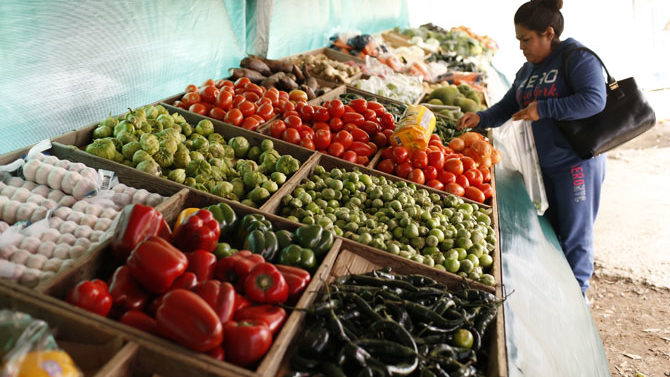In a change of pace from the last few columns, this is not a political story. This is a story about food. It’s a look at how some Latino families in Athens stay connected to their culinary roots. Yet, in this uncertain climate for immigrants in all communities, I will note that food is a connecting force.
About one in 10 Athens families is Latino. Though often treated as one homogenous group, our Latino community represents diverse cultures spanning Mexico and various countries in Central and South America.
Many come from small, rural towns, says Paul Duncan, associate director of the Latin American and Caribbean Studies Institute at UGA. Duncan is very familiar with the people of rural Latin America and their food cultures, having spent years in Guatemala and the highlands of northern Mexico. The one common element he saw in each location were kitchen gardens. They were the norm.
“Many people just step out of their home and walk a few feet to where their parcel of corns and beans and squash is,” Duncan says. These people also frequented local markets to purchase foods that they didn’t grow at home.
When they arrived in Athens, many families lost this direct access to fresh food. Duncan saw an opportunity to both teach students in his horticulture courses about native Central American plants and provide kitchen gardens for members of the Pinewoods community. The plots of land in Pinewoods are small, but there’s room to build raised beds and create container gardens.
Over the semester, teams of two to three students work with one family to determine which vegetables or herbs they want. Papalo, for example, is popular. This herb is similar to cilantro, but a little spicier.
“It’s ubiquitous in rural El Salvador,” says Duncan. “It’s part of the cooking tradition, and it has been for thousands of years”—unlike cilantro, he adds, which isn’t even native to Latin America.
Finding native produce and herbs is a constant challenge, especially in local grocery stores where avocados are often as exotic as it gets. The Latino community-needs assessment study completed by LACSI in January showed that 78 percent of Athens’ Latino families get their food from grocery stores. Though the “Hispanic” sections at American supermarkets like Kroger and Walmart are growing, they mostly carry processed foods. The same can be said of smaller stores that cater to Latinos, such as Los Compadres or La Jalisco, where families can find familiar brands of salsa, other canned items and candy, but a limited selection of fresh foods.
They are more likely to find specialty produce at the J&J Flea Market off Highway 441 just over the Jackson County line. “There’s two or three entire rows in the flea market that are full of produce,” says Alejandra Calva, “and most of the people who are selling at those stands are Hispanic/Latino.”
Calva coordinated the needs-assessment study and leads LACSI’s PORTAL initiative. She grew up outside of Mexico City and moved to the U.S. when she was 11 years old. When she walks down the aisles at the flea market, Calva says she feels like she’s back in Mexico. “Everybody’s speaking Spanish, and it’s the vegetables and fruits that you know, that you know how to use, how to prepare.”
The produce is typically cheaper, too. The majority of Athens’ Latino families earn $24,000 or less. Cost is one of the main barriers Calva found that limits access to a range of needs—health care and healthy food among them. Language is another.
“The people who are selling you the food [at J&J] are speaking Spanish, and you can ask them questions,” she says. “You don’t have to deal with the language barrier that you might be facing when you go to the big supermarkets.”
Between the produce selection and the restaurants that serve “delicious” street food, J&J is recreating something familiar, a feeling of community. Calva, a self-described “transplant several times over,” is reminded of her childhood when she visits. “I have the food, and I see the zucchini flower and the things that my mother used to make. I feel like I’m home.”
Like what you just read? Support Flagpole by making a donation today. Every dollar you give helps fund our ongoing mission to provide Athens with quality, independent journalism.










